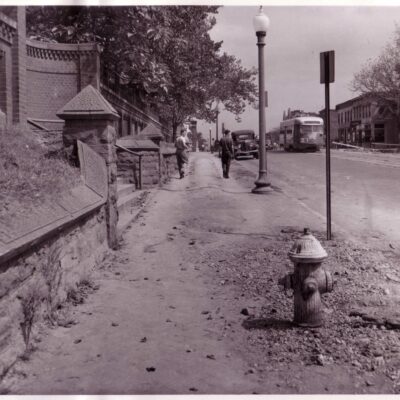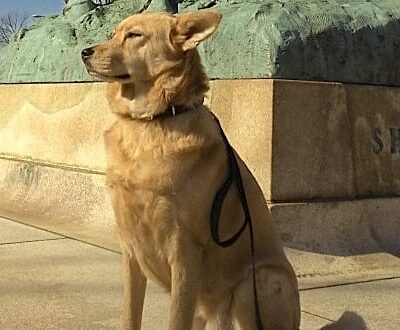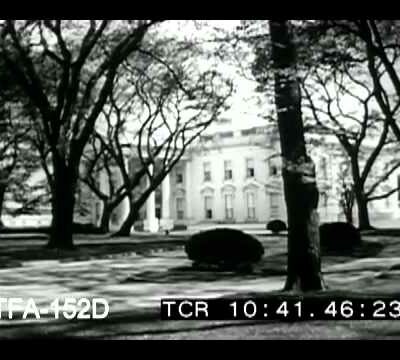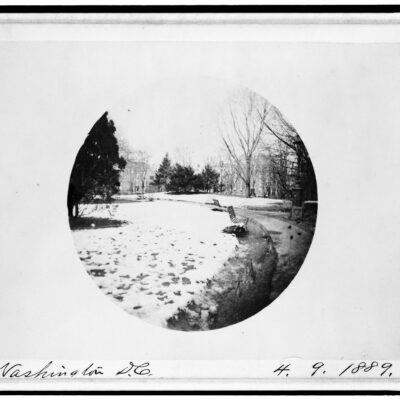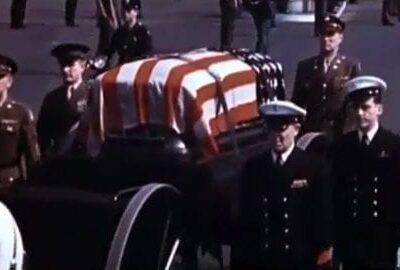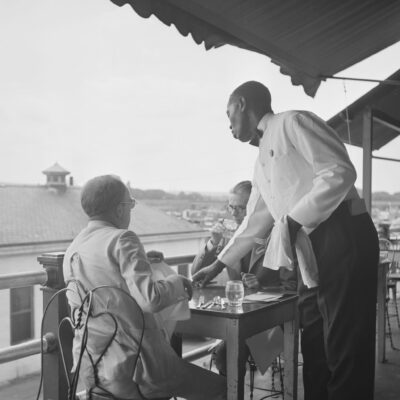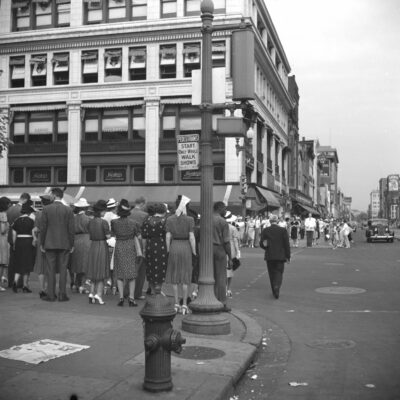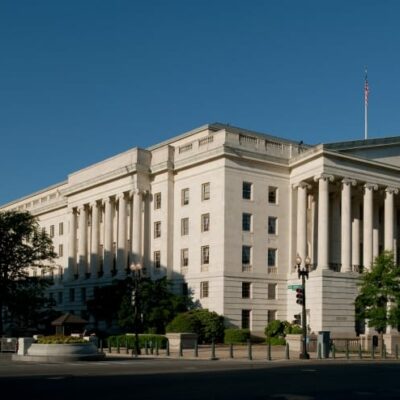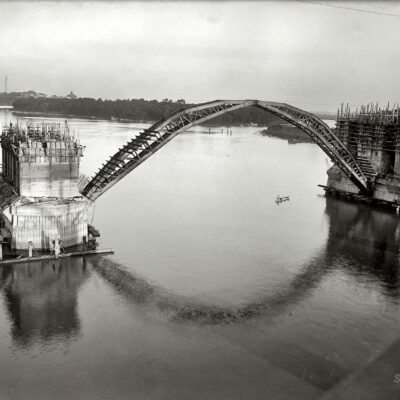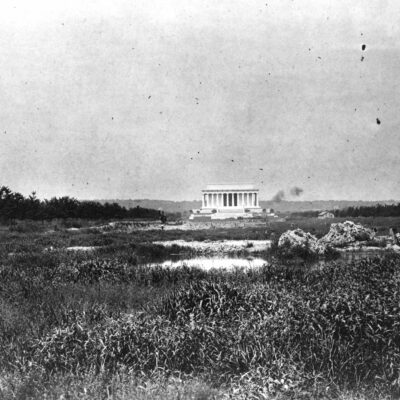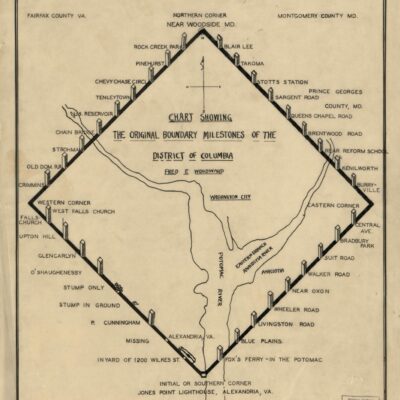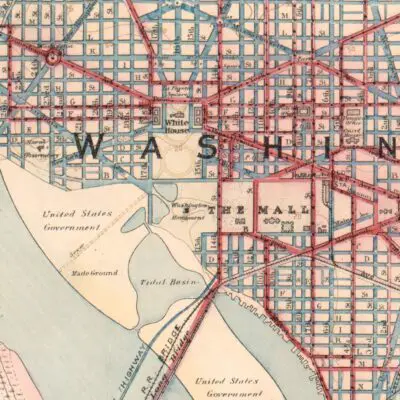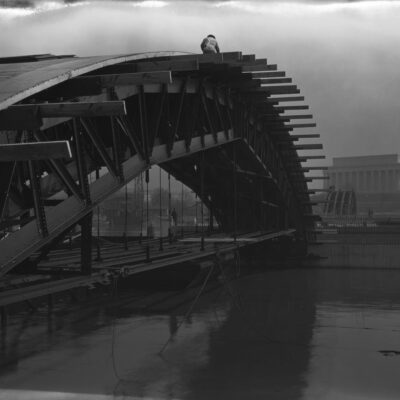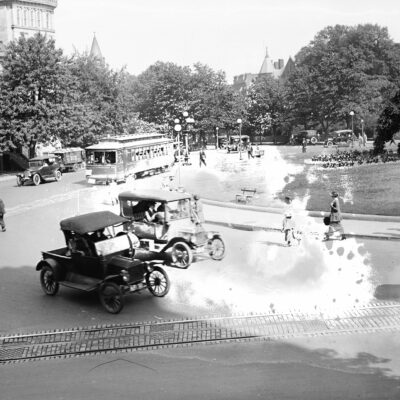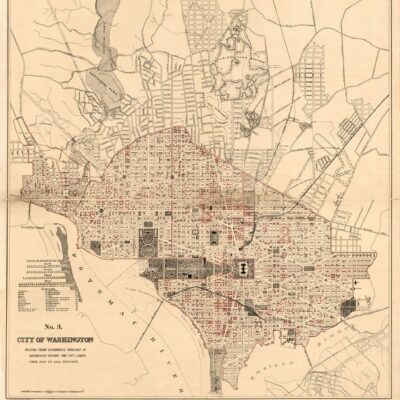The popular “Three Things…” post about Dulles Airport prompted me to give equal treatment to our other local, older and much more convenient airport: National Airport (not Reagan National Airport, thank you very much). Actually, the airport was once known as the National Airport at Gravelly Point.
Maybe we should change the name to George Washington National Airport (Reagan made a great quip about our first president in his State of the Union Address). Or, we could also name it after another favorite Virginia son, Thomas Jefferson … Reagan made a great comment about him as well. I’m sure the 40th president wouldn’t mind.
1. Guam-to-D.C. direct in 35 hours
The first interesting story I uncovered was from November 21st, 1945. Just after World War II, the airport had only been open for a few years, when a B-29 Superfortress — the type of aircraft that had dropped incendiary bombs on Tokyo near the end of the war and brought the war to a close by dropping atomic bombs on Hiroshima and Nagasaki — flew nonstop from Guam to D.C. without refueling.
At the time, this was the world’s longest flight, totaling 8,198 miles, breaking the previous mark set in 1938 by almost 1,800 miles. The U.S. Army Air Forces used the flight to demonstrate both the superiority of their technology, but also highlight a new age in warfare and vulnerability to attack from anywhere at anytime.
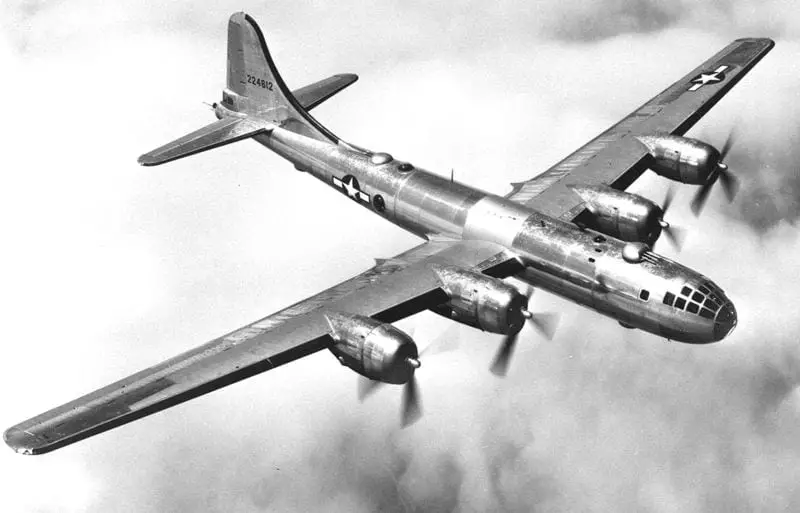
The plane was commanded by Col. Clarence S. Irvine, supported by a nine-man crew from their base on the island of Guam.
Below is a brief excerpt from the Washington Post’s report on their arrival.
Irvine said the heavily loaded craft waddled into the air at Guam just as the 9500-[foot] runway “gave out,” and was not flown above 50 feet for the first five hours. From the moment Guam faded behind them, the crew did nto [sic] see land again until they raised Cape Flattery, northwest of Seattle. There they cut out one engine to save fuel.
Along the way Irvine said, they ran into seven weather fronts “full of ice.” In one of them they had trouble with icing because the airplane had no de-icing equipment.
“Crossing the Rockies,” Irvine said, “we couldn’t get over 12,500 feet and it was very unpleasant. “We were in the soupr all the time.”
Otherwise, he said, they “didn’t have any trouble.”
Wow. Don’t forget that the Rockies top out at 14,400 feet … an exceedingly dangerous place to fly an airplane, not to mention one as large and cumbersome as a fuel-laden bomber.
When the crew landed at National Airport after their 36-hour adventure, they still 300 gallons of fuel remaining in their tanks, enough for one more hour of flight. They started their journey in Guam with 11,110 gallons.
2. TWA ticket agent murdered at National Airport
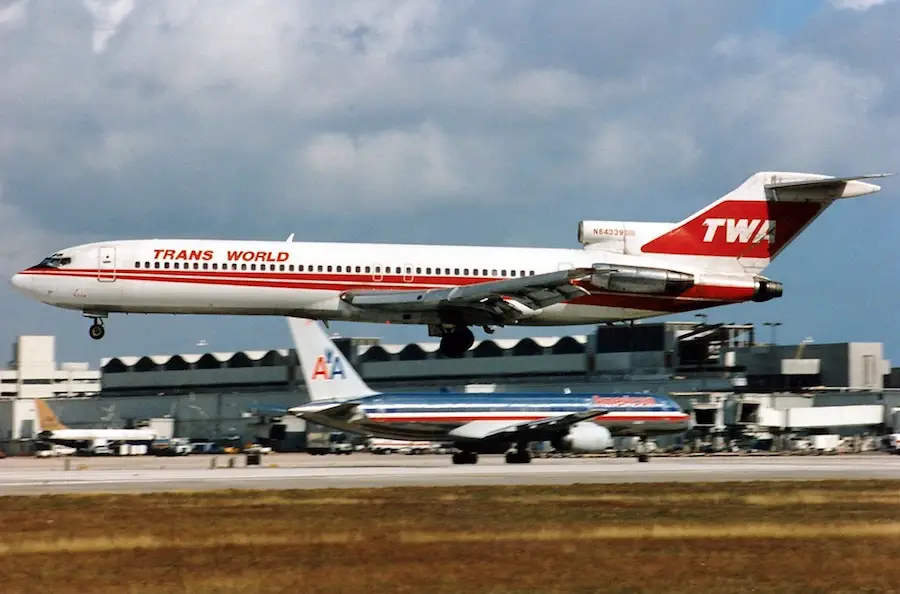
Okay, this is nuts. If you were living here over 30 years ago, you might remember this.
An article in the Washington Post from November 20th, 1980 details the tragic murder of a long-time employee of TWA (if you’re 30 or older, you’ll also remember this airline).
Michael F. Papa, a 25-year employe of Trans World Airlines at National Airport, was fatally stabbed in an airport restroom yesterday in an apparent robbery attempt near the TWA ticket counter where he worked as agent-in-charge.
Airport police took an 18-year-old Fort Belvoir solider into custody moments after a TWA customer service agent stopped him as he tried to leave the restroom in the main terminal building.
…
Police identified the suspect at Pvt. Joseph Patrick Shay of the 11th Engineer Battalion’s 902nd Engineer Company at Fort Belvoir, a former resident of El Paso, Tex. Shay was arraigned at U.S. Magistrate’s Court in Alexandria yesterday afternoon and ordered held without bond on a charge of first-degree murder.
Papa was stabbed over 25 times in the bathroom with a five-inch hunting knife and was hunched over clutching his bloody chest when he was discovered. Shay was exiting the bathroom as an alert ticket agent entered to investigate reports of a fight. The agent ordered Shay to stay put, which he surprisingly did, while law enforcement were called.
Shay claimed to have been high on amphetamines and he had no prior criminal record or known issues with drugs.
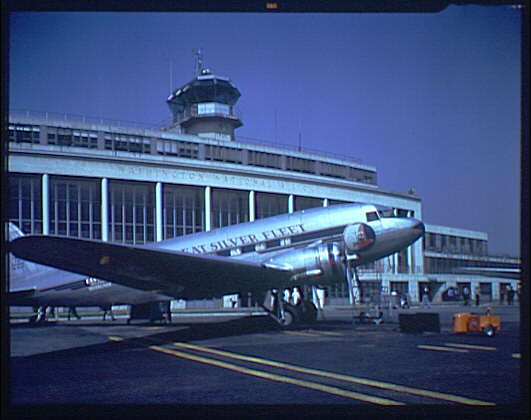
3. The airport is actually in D.C.?
The airport is largely built on top of landfill in the Potomac River. The boundary between D.C. and Virginia was established in 1846, after retrocession, as the high-water mark of the river (i.e., the land was Virginia, the water was Washington, D.C.).
It’s pretty clear today that when you fly into DCA, you’re landing in Arlington, Virginia, with an amazingly scenic approach over D.C. from the north. Well, it wasn’t so clear back in the 1941 when the airport was opened. And as with most jurisdictional fights, a large part of this was over money. Virginia wanted to tax both gasoline and liquor sold at the airport.
There were even suggestions to solve the problem by making Arlington part of the District again, especially since the War Department had already expanded across the river with the Pentagon.
In June 1945, a bill passed the House fixing the border as the mean high water mark on the new shoreline, placing the airport squarely in Virginia. The Post reported the story on June 26th, 1945 (a little more than a month before the end of World War II).
The House passed by a voice cote and sent to the Senate a bill which would end the century-old uncertainty about who has jurisdiction over a “No man’s land” on the southwest shore of the Potomac River.
…
“If a murder were to be committed in the area tomorrow,” Representative Smith (D., Va.) told the house, “there would be grave doubt that the guilty person would ever be brought to trial because of the uncertainty over jurisdiction.”
Someone recalled that a man died a month or so ago at the National Airport, across the river from the Capital, and no coroner would declare him dead.
The dispute between D.C. and Virginia was settled by Congress, placing the airport in the jurisdiction of the Federal Government, but permitting the taxation of liquor sales by Virginia.
Well, taxes weren’t the only thing. The desire to limit bureaucratic limbo and paperwork was another. An article in the Washington Post from February 8th, 1945 added an interesting twist.
Employes at the National Airport have been instructed, in a pseudo-official memorandum, to do their dying at home, and save the officials of Arlington County, Alexandria and the District of Columbia a jurisdictinal [sic] headache, it was learned yesterday.
“If you’re going to die, don’t do it here!” because the by-word last September, according to Airport Manager Harvey F. Law, after it took 36 hours to get permission to bury an airport employe who died on the job.
Check out some more photos of National Airport in 1941 at the Library of Congress.
Also, if you liked this post, share it with your friends on Facebook or Twitter.
